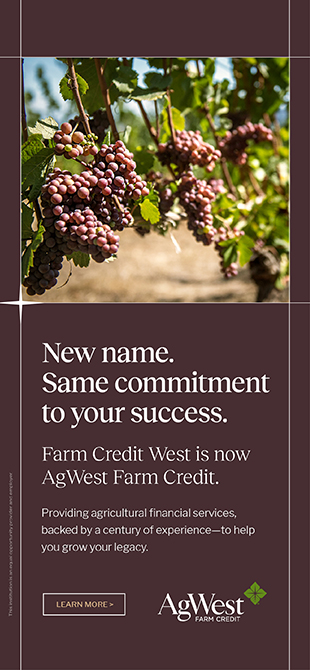.png)
Paso Basin Planting Ordinance
SLO County Board of Supervisors will vote on December 6, 2022 whether to adopt the Paso Basin Land Use Management Area Planting Ordinance. Read the Planting Ordinance by clicking here.
Even if you do not farm or ranch in the Paso Basin, the Ordinance has implications for all of SLO County agriculture. Send your comments to the Board of Supervisors by emailing Boardofsups@co.slo.ca.us with the subject "Paso Basin Planting Ordinance." The agenda for the December 6 meeting will come out this week here.
OVERVIEW
- The goal is to replace the current Agricultural Offset Ordinance, which limits sites (defined as a contiguous set of parcels under common ownership) in the Paso Basin to their historical irrigation use as of 2015 and caps most other sites to 5 acre-feet per year (AFY).
- The current ordinance has been a “stop-gap" policy until the Paso Basin Groundwater Sustainability Plan (GSP) can manage groundwater. Supervisors want to raise this 5 AFY limit to 25 AFY through the year 2045. For perspective, 25 AFY allows for a 20-acre vineyard or 13.16 acres of vegetables.
- To make this change, the Planting Ordinance had to undergo an Environmental Impact Review, and the County will be required to place several “Mitigation Measures” (regulations) on farmers and ranchers.
WHO WILL BE SUBJECT TO THE PLANTING ORDINANCE?
- Any farmer or rancher in the Paso Basin who rotates to a different irrigated crop type (e.g. planting vegetables one year and planting a hay crop the next year) will be subject to the Ordinance.
- Replanting the same crop type and acreage that has been in production within 6 years preceding January 31, 2023 will be exempted. However, the County has not been able to clarify if this exemption goes away if the replanting is happening in an area on the site that has not been cultivated within the previous 10 years.
- Anyone in the Paso Basin seeking to use the new 25 AFY allowance will be subject to the Ordinance.
WHAT ARE THE CONCERNS?
The Ordinance will create several unintended negative consequences. Impacts to smaller scale farmers include:
- Limiting smaller scale farmers to only 25 AFY of irrigation water until 2045, even though the forthcoming GSP process allows for more flexibility for these farmers;
- A new and unprecedented Greenhouse Gas and Carbon Sequestration mandate to plant crops; and
- A costly new County requirement to hire a geologist to perform a hydrology report before planting crops.
Farmers and ranchers of any scale that are subject to the Ordinance will be burdened with:
- A new 50-foot setback from riparian and wetland areas (includes intermittent blue-line streams);
- Mandatory reporting of monthly irrigation water usage to the County (records may be public); and
- A new Dust Control regulation with things like paving farm roads and installing speed bumps along fields.
The Planting Ordinance does not expire until 2045, meaning all farmers and ranchers in the Paso Basin will be prevented from new plantings for 22 years even if groundwater conditions improve based on GSP actions many years before then.
WHAT IS THE LOCAL AGRICULTURE COMMUNITY’S POSITION?
- SLO County Farm Bureau, SLO County Cattlemen's Association, Paso Robles Wine Country Alliance, Growers-Shippers Association of Santa Barbara and San Luis Obispo County, the SLO County Planning Commission, and the SLO County Agricultural Liaison Advisory Board, which includes representatives from Farm Bureau, Cattlemen’s Association, vegetable growers, strawberry growers, wine grape growers, our two Resource Conservation Districts, direct marketing/organic farmers, nursery growers, agricultural finance, and appointees from all five SLO County Supervisor Districts, all oppose the Planting Ordinance.
- We urge the County to continue short-term extensions of the current Agricultural Offset Ordinance until the GSP is implemented. Farm Bureau will continue working with the main proponent of the Planting Ordinance, Supervisor Debbie Arnold, to make changes to the Ordinance in case it passes on December 6.
- Proponents of the Planting Ordinance have argued this will help “small farmers” and “create a more equitable distribution of water.” But even for the property owners who would benefit from a 25 AFY allowance, the costly new regulatory burdens created by the Planting Ordinance will likely prevent them from planting any crops.
- Given the structure of the Planting Ordinance (the allowance of 25 AFY of water for an unlimited number of sites if they are not contiguous), the most likely beneficiaries will be people with larger financial resources who will take advantage of this new system and plant new crops on multiple sites. As the Ordinance only looks at ownership, a single vineyard company could lease an unlimited number of sites each with 25 AFY of new water.
- It might help a handful of property owners, but it does so at the expense of the vast majority of growers in the Paso Basin, and the mitigation measures set a dangerous precedent for regulating agriculture in SLO County.



